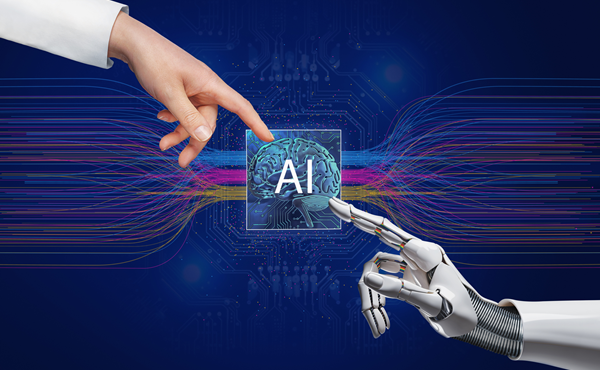Much of the world has been using Generative AI (Gen-AI) to do fairly low risk, efficiency-based tasks such as analysing large data sets, automating routine tasks and synthesising or theming information.
According to Fifth Dimension CEO Lyndall Spooner, while Gen-AI is exceptionally good at these types of workflows and activities many people are pondering how they could use Gen-AI next and if there are any other uses that would actually bring value on a day-to-day basis and help set them apart from what everyone else is doing.
Humans consist of different personality types, but Gen-AI has only one profile
“A simplified psychological framework can be applied to segment humans into four major personality types or ways of thinking and behaving,” Spooner says.
“The first dimension we use to segment people is whether you have more of an optimistic or pessimistic outlook. The second dimension is whether you are more conscientious or apathetic when faced with decisions.
“Like humans, Gen-AI also has its own dominant personality, based on the algorithms that drive it. Gen-AI’s default personality and thinking is to be highly optimistic and conscientious. Gen-AI algorithms strive to be helpful and constructive, provide positive and actionable advice and ensure what it conveys is based on accurate, well researched and helpful information. It is also designed to pay attention to detail, deliver thoughtful analysis, be efficient and present complex ideas simply.”
Gen-AI is optimistic, but most humans are not
“While Gen-AI is marketed as the ‘all purpose’ solution, only one in three people claim to think and behave like Gen-AI.
“In fact, with rising anxiety, depression and pessimism in the world, less and less of us think the way Gen-AI has been programmed. Our research shows Gen-AI is more likely to think like a baby boomer than a digital native (Gen Y, Z, Alfa).”
Gen-AI thinks and behaves like a baby boomer
“Baby Boomers are the most optimistic and conscientious of any generation. Just like Gen-AI they are more likely to be confident in making decisions as they do their own research and evaluate their own needs, like to plan ahead and make their own decisions independent of others,” she adds.
“Whereas younger generations are losing their self-efficacy and are least likely to think like Gen-AI. They feel the most negative about their future, lack confidence, are more likely to be driven by fear, are least likely to plan ahead or understand their own needs and have the lowest ability to comprehend information. As a result, they are more likely to be influenced and nudged into a decision.”
The default personality of Gen-AI makes it good for some tasks, but not all
“Just like humans, the default personality of Gen-AI makes it great for some tasks but not as ideal for others,” Spooner says.
“If you were hiring someone to summarise information or to drive efficiency you want that person to think like Gen-AI. We all know these people, they love a good spreadsheet, they are accurate and considered, they don’t procrastinate or spend hours watching mindless reels. They simply get stuff done and feel good when it is done well.
“These detail orientated people are not the best for more creative tasks. Gen-AI is not intuitively or expressively creative and because of its programming it tends to be overly positive, too rational and generalised and contrived and exuberant in its generic language set.”
Gen-AI does not think like most of us—it is way too rational
“Gen-AI does not think like most people do, which means it will struggle to accurately explain behaviours and the nuances of what interests people in new products and services,” Spooner adds.
“It has no fear which is a problem because many decisions and behaviours that people undertake today are driven by fear. Gen-AI has clear priorities, parameters and goals and it remembers everything.
“Humans on the other hand are emotional and forgetful. All training data used to build large Gen-AI language models remains salient and available, whereas over time humans tend to remember some things and forget others. Humans move on, change their focus, remember some experiences and forget others. There are layers and intricacies to what remains relevant over time and this can create differences between what humans believe is important compared to Gen-AI.”
Can Gen-AI really capture the mood and desires of your customers to drive growth?
“Remember there are numerous companies out there talking about the benefits of using Gen-AI in many different ways, all of which directly boost their revenues. The prudent approach is to consider what am I potentially giving up by using Gen-AI as much as what am I gaining.
“It is important to consider how you use Gen-AI, especially if you are looking for new product or service ideas or growth opportunities. Does the ‘opinion’ expressed by Gen-AI actually reflect your target audience? Does your target audience have the confidence and level of understanding and knowledge that you have fed into your Gen-AI training data? If the answer is no, then you need to consider other factors.
“When using Gen-AI, how are you structuring your prompts? Did you ask for the potential downsides of an idea? Did you ask it to take a more pessimistic view? Did you explore what are less common reasons people may or may not like an idea?”
Is the hybrid approach still the best way forward—human and Gen-AI
“Given that Gen-AI lacks human emotion and is more reflective of the personality type of a baby boomer, is the technology really delivering the content or output that is really needed for the purposes of helping organisations to connect with their audiences and drive growth,” Spooner says.
“Maintaining a hybrid approach involving humans in your creative processes, ensuring you gain a wide range of opinions from real people on what their needs are and what motivates them, will give you broader creative platforms than the centralist view of Gen-AI.”
Image: iStock/FotografieLink







